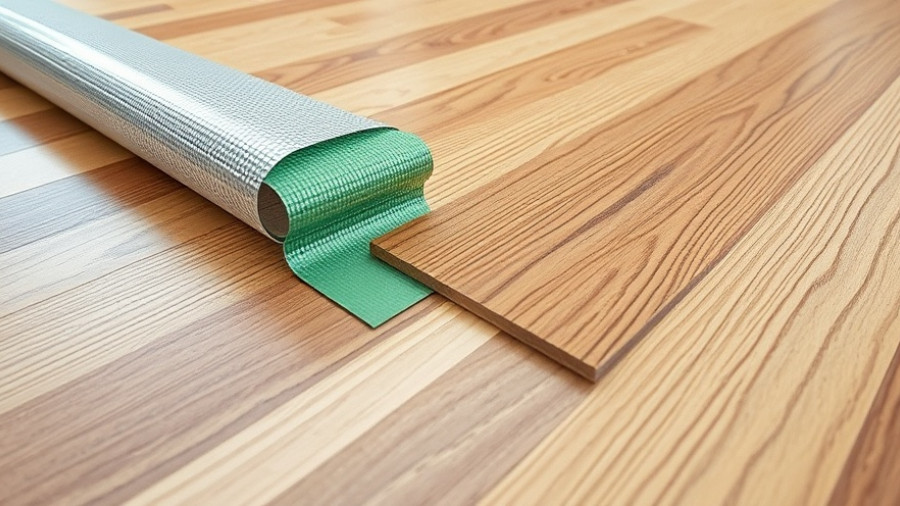
Unveiling the Simplicity of Peel and Stick Tile Installation
Homeowners eager to transform their rooms without the hassle of professional help will find peel and stick tiles to be a game-changer. This innovative flooring solution combines ease of use with stylish appeal, letting you take charge of your home improvement projects. Armed with just a few basic tools and a bit of preparation, the journey from old flooring to a fresh, new look can be completed in just a few hours.
Essential Preparation Before Installation
Before diving into tile installation, it is crucial to prepare your workspace diligently. Start by removing any old baseboards, ensuring a clean area devoid of detritus that can interfere with adhesion. Eliminate any uneven surfaces by sweeping thoroughly and, if necessary, applying a latex primer to the existing floor to enhance the stickiness of your new tiles.
Gathering Your Tools: What You Need
The installation process requires various tools to ensure a smooth workflow. Essential items include:
- Pair of nippers
- Putty knife
- Pry bar
- Dustpan
- Dust mask
- Eye protection goggles
- Stiff-bristled broom
- Vacuum cleaner
- Chalk lines
- Utility knife
- Rollers
These tools will help facilitate a seamless installation process, making it easier for you to achieve that polished look.
Calculating the Exact Amount of Flooring Needed
One critical step is measuring the space you wish to cover. Begin by measuring the length and width of the room in feet and multiply these numbers for the total square footage. To avoid running short, it’s wise to purchase an extra 10% more than the calculated total. For instance:
Length x Width = Total sq. ft.
Total sq. ft. + (Total sq. ft. x .10) = Amount of tiles to buy
This calculation helps ensure you have enough material for installation, cuts, and future repairs.
Installation Steps: A Simple Breakdown
Installing peel and stick tiles might seem daunting, but it’s easier than it appears! Follow these steps for a successful installation:
- Start with the Surface: Ensure your floor is clean and dry. This includes pulling out baseboards and ensuring all nails or debris are removed.
- Mark Your Line: Using the chalk lines, mark where your first tile will start. This is crucial for alignment.
- Begin Laying Tiles: Start from your marked line, peel off the backing, and place the tile down, applying pressure initially to keep it secure.
- Finish Up: After laying all the tiles, consider using a vinyl roller to ensure every piece is firmly in place. It’s generally the last touch that makes a big difference!
The Importance of Grouting
While grouting isn't always necessary, it can enhance the overall appearance of your newly installed tiles. For areas that will experience heavy foot traffic or moisture, consider applying grout for added durability and aesthetic appeal.
Common Mistakes to Avoid
Even a straightforward process like installing peel and stick tiles can come with pitfalls. Here are a few common mistakes to steer clear of:
- Skimping on Measurements: Not measuring twice can lead to serious complications, so make sure to be precise!
- Rushing the Preparation: Skipping cleaning or surface preparation can lead to poor adhesion and tiles lifting over time.
- Ignoring Acclimatization: Don’t forget to let your tiles sit in the room where they will be installed for a few hours beforehand. This helps avoid expansion or contraction once installed.
Your DIY Project Awaits!
Taking on this DIY project not only elevates the aesthetic of your home but also instills a sense of accomplishment. The satisfaction derived from laying your own tiles is unparalleled. Plus, with the right tools in hand and a clear plan laid out, you will find that transforming your living space can be both fun and rewarding.
Ready to bring your flooring vision to life? Gather your materials, follow the installation steps, and showcase your stunning new room!
 Add Row
Add Row  Add
Add 




Write A Comment